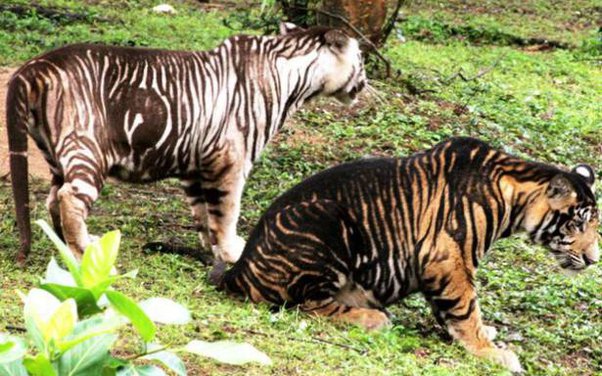- Courses
- GS Full Course 1 Year
- GS Full Course 2 Year
- GS Full Course 3 Year
- GS Full Course Till Selection
- CSAT
- 5 LAYERED ARJUNA Mentorship
- Public Administration Optional
- Online Program
- GS Recorded Course
- NCERT (Recorded 500+ Hours)
- Polity Recorded Course
- Geography Recorded Course
- Economy Recorded Course
- AMAC Recorded Course
- Modern India, Post Independence & World History
- Environment Recoded Course
- Governance Recoded Course
- Science & Tech. Recoded Course
- International Relations and Internal Security Recorded Course
- Disaster Management Module Course
- Ethics Recoded Course
- Essay Recoded Course
- Current Affairs Recoded Course
- ABOUT US
- OUR TOPPERS
- TEST SERIES
- FREE STUDY MATERIAL
- VIDEOS
- CONTACT US
BLACK TIGERS
BLACK TIGERS
04-05-2023


Latest Context
The death of a Rare Black Tiger was reported after three decades in the Similipal Tiger Reserve in Mayurbhanj district of Odisha. Simlipal has the world's highest rate of black tiger sightings in the world.
- Population of black tigers is very limited.
- The death of a male tiger will affect the breeding of tigers in the region.
- Hence, it will impact on the population of the animals.
Facts about Black Tigers
- Black Tiger is a rare colour variant of the Bengal tiger and is not a geographic subspecies or distinct species.

- The coat colouration and patterning of ‘’black tigers’’ are due to a single mutation in the Transmembrane Aminopeptidase Q (Taqpep) gene.
- Pseudo Melanistic (False Melanistic): Animals may appear black or dark brown, but they still retain their original markings and patterns.
- Melanism: This is a genetic mutation that causes an animal to have an unusually high amount of the pigment melanin in its skin, hair, feathers, and resulting in a black or very dark coloration.
- Causes for Black Colour: Mutation can occur naturally in tiger populations and it is thought to be a rare occurrence.
Highlights of Similipal Tiger Reserve
- Established as a tiger reserve in 1956.
- It came under Project Tiger in 1973.
- Government of India declared a biosphere reserve in June, 1994.

- In 2009, It became part of the UNESCO World Network of Biosphere Reserve.
- Mayurbhanj Elephant Reserve is called as ‘Similipal-Kuldiha-Hadagarh Elephant Reserve’.
- Mayurbhanj Elephant Reserve includes 3 protected areas such as Similipal Tiger Reserve, Kuldiha wildlife sanctuary, Hadagarh Wildlife sanctuary.
- Lies in the eastern end of the eastern ghat and situated in the northern part of Odisha’s Mayurbhanj district.
- It is home to wild animals including tigers and elephants, 20 species of amphibians, 62 species of reptiles and 304 species of birds.
- Major Protected Areas in Odisha:
- Bhitarkanika National Park.
- Chilika (Nalaban island) WLS.
- Baisipalli WLS.
- Nandankanan WLS.
- Gahirmatha (Marine) WLS.
Tiger Conservation Efforts in India
- Project Tiger 1973: Launched in 1973 under the Government of India, and it is a Centrally Sponsored Scheme.
- National Tiger Conservation Authority (NTCA): Established in 2005 with the aim of strengthening tiger conservation efforts in India and ensuring the long-term survival of the species.
- statutory body under the MoEFCC (Ministry of Environment, Forests and Climate Change).
- It constituted under section 38 L (1) of Wildlife (Protection) Act, 1972.
- Conservation Assured | Tiger Standards: CA|TS is a set of criteria which allows tiger sites to check if their management will lead to successful tiger conservation.



